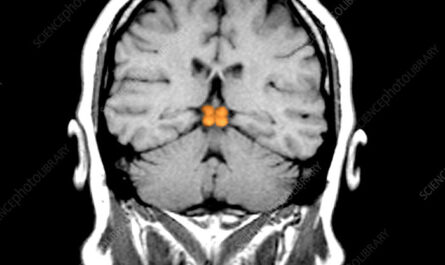A team of researchers at the University of São Paulo’s Physics Institute (IF-USP) in Brazil, in collaboration with colleagues at the University of Leuven in Belgium, have developed a new luminescent material that can facilitate the measurement of concrete deterioration in buildings and other structures. The results of their study were published in Chemical Communications.
Concrete is a vital material in the construction industry, providing the foundations and structures for buildings, roads, bridges, and other infrastructure projects. However, the service life of concrete is limited, and it is necessary to monitor its condition to ensure the safety and longevity of structures.
The average lifespan of concrete structures is around 50 years. Over time, constant exposure to water, salts, and gases from the atmosphere leads to acidification and corrosion of the steel reinforcing bars within the concrete. This corrosion significantly reduces the weight-bearing capacity of the structure.
To extend the lifespan of concrete, preventive measures such as the addition of protective layers can be employed to hinder the penetration of carbon dioxide (CO2) into the exposed surfaces. However, in order to implement these measures, it is essential to be able to verify and characterize the degree of deterioration in the concrete.
The traditional methods used by engineers to assess the condition of concrete, such as taking samples and conducting laboratory analysis, are time-consuming, costly, and complex, particularly in hard-to-access areas. Additionally, these methods can be hazardous and further weaken the concrete if not carried out correctly.
In this study, the researchers at IF-USP’s Nanomaterials and Applications Laboratory (LNA) developed a catalyst based on layered double hydroxide (LDH), or anionic clay, to measure the degree of deterioration in concrete. They added trivalent europium (Eu3+) to create orange-to-red luminescence.
Laboratory tests revealed that the luminescent material changed color when exposed to ultraviolet light (UV), depending on the amount of carbonate it had absorbed. This color change can be used to detect deterioration in the concrete, with a greater shift towards red indicating a larger amount of carbonate and more significant concrete degradation.
The main advancement of this research is the ability to determine in real time the rate of concrete deterioration and when maintenance will be required without the need for drilling or waiting for laboratory analysis. This allows for more efficient decision-making, facilitates preventive maintenance, and helps to avoid accidents that can have severe consequences both in terms of human lives and economic damage.
The next step for the researchers is to develop a sensor that can detect the luminescent material and test it under real-world conditions. This will involve evaluating factors such as weatherability and stability inside concrete.
In addition to enhancing building safety, this new method can have significant benefits in terms of cost reduction and carbon emissions. The longer concrete structures last, the less investment is required in new constructions. Furthermore, the construction industry contributes to global greenhouse gas emissions, with 8% coming from concrete production and construction activities. By extending the lifespan of concrete structures, this new method can help reduce carbon emissions from the industry.
The study also involved researchers from the University of Kiel in Germany, further highlighting the importance and international collaboration in this field of research.
*Note:
1. Source: Coherent Market Insights, Public sources, Desk research
2. We have leveraged AI tools to mine information and compile it



